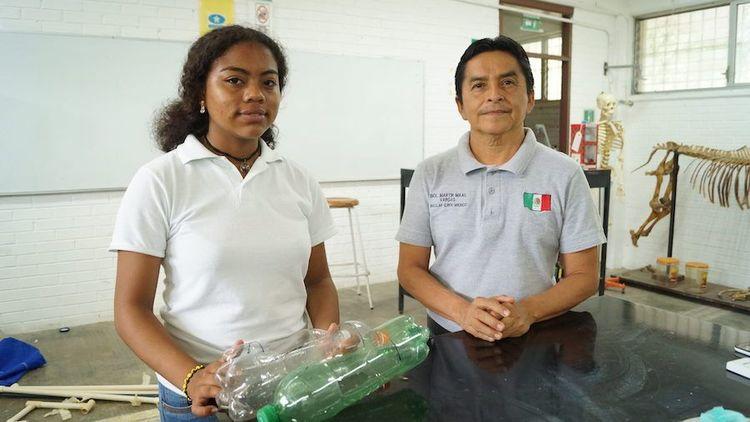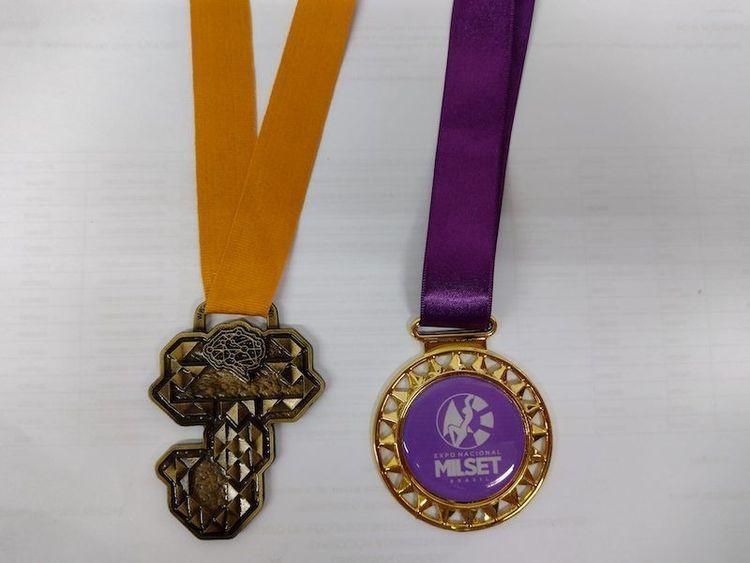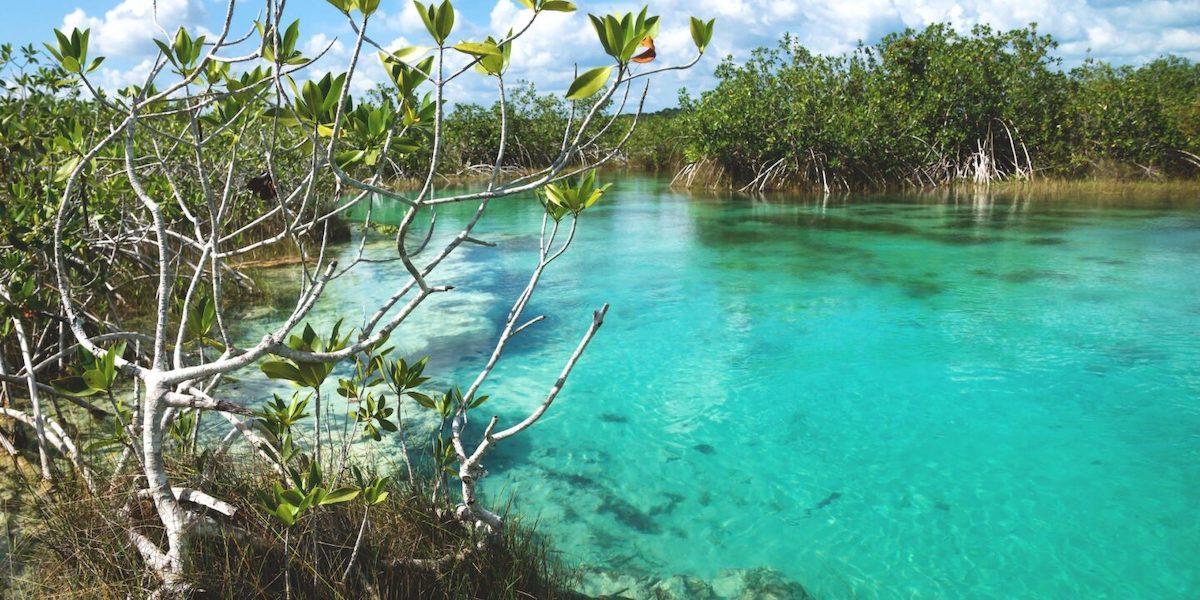The red mangrove reforestation project began in 2020 when Martín Maas, professor of biology at the Bacalar College of Bacalar, in the Mexican state of Quintana Roo, invited students Mariana Gil and Gerardo Blanco to participate in a competition to design an environmental conservation project in their community.
The students, who were 16 years old at the time, decided to work with the reforestation of the red mangrove in the municipality of Bacalar, on the Yucatan Peninsula. The lake of the seven colors, as the lagoon is known for the different shades of blue of the water, is a popular tourist destination in the region and Gil had seen first-hand the impacts that mangrove deforestation was having on his community.
“Hurricanes used to affect the town, but we didn't see as many consequences as now,” he explained. “The coastal areas and low-lying areas of the town are already being flooded horribly,” Gil added.
Mangroves act as a protection system against tropical storms: they reduce soil erosion and retain sediments that come from elevated areas. In the Caribbean region, where Bacalar is located, there have been at least 67 tropical storms from 1980 to 2019, and at least 14 last year alone, of which eight were hurricanes and two intensified to become high-intensity hurricanes with winds that reached around 179 kilometers per hour. Without mangrove protection, the destruction of these storms increases.
The west coast has suffered the greatest loss of mangroves due to urban and tourist development. Bacalar has two of the four mangrove species that exist in Mexico: Red mangrove (Rhizophora mangle) and Botoncillo Mangrove (Conocarpus erectus). Both are threatened and are protected under the NOM059 standard, which is responsible for identifying species of flora and fauna at risk of extinction in Mexican territory.
The Mangrove Rescue

Professor Martín Maas and student Yanis Diaz Pech show a prototype of chinampa, a floating garden made of PET plastic bottles and canvas. Picture: Yanine Quiroz.
At the local level, the deforested area of the mangrove forest in the Bacalar lagoon has not been calculated.
The only available data are on mangrove disturbance at the national and state levels. Regarding the latter, according to the Mangrove Monitoring System of Mexico, Quintana Roo had 1,174 hectares of disturbed mangroves (areas of dead or regenerating forest) in 2020, a figure equivalent to more than 1,600 football fields.
In Mexico, mangroves extend over 905,000 hectares, according to data from the National Commission for the Knowledge and Use of Biodiversity (CONABIO). The country has one of the 10 highest rates of mangrove loss in the world, with an average of 10,000 hectares lost each year.
With this information, the young people decided to reforest. They collected red mangrove seedlings (which is the mangrove in its early stages of life) in a state reserve in Bacalar. With plastic (PET) containers and old canvas, they built a kind of chinampa, a 700-year-old Aztec agricultural technique, in which they cultivated red mangroves. On top of each chinampa, they placed a mesh to provide shade.
“We saw that we could make chinampas inside the school and we didn't spend money on greenhouses, because we do everything with reusable material. [The project] could be replicated on a larger scale in schools and society,” Gil says.
Gil took the chinampa to his backyard and during 2020, he monitored the growth of the seedlings and the conductivity of the water, the physical property of conducting heat or electricity, on a monthly basis, until they were ready to be reforested in the lagoon. Maas explains that the conductivity of water is a measure of its quality.
“I had them from seedlings, from seeds. I looked after them all the time and watched them grow. That motivated me to continue with the project. I became fond of them,” Gil shares.
Although the project was a pilot, it demonstrated that of the six reforested seedlings, three survived and remain in the lagoon. “Our objective was to see if mangrove seedlings adapted to a household environment through plastic chinampas, and indeed, there were good results,” Maas says.
In 2022, Gil and Blanco won medals in two international scientific competitions. The awards are on display in the Maas biology laboratory.

The medals won by Mariana Gil and Gilberto Blanco for their project. Picture: Yanine Quiroz.
The project has been nourished by the support of several people, including Edwin Cano, president of the Association of Nautical Service Providers of Bacalar and a former student of Maas, who helps him to transport his students to the lagoon to do schoolwork, through boats called pontoons, which produce less noise and consume less fuel.
Next steps
The legal procedure, explains the biologist, is one of the limitations to continuing and extending the project. Because the red mangrove is protected by the NOM 059 standard, permission must be requested from the Secretariat of Environment and Natural Resources (SEMARNAT) to create an environmental management unit, that is, land designated for sustainable use and environmental conservation where plants can be cultivated. This applies even to small projects. But Maas is undeterred: “Once we have all that, we practically continue to start the project,” he says.
A woman fishes in a canoe
Another limitation is the extent of mangrove reforestation in the conservation of the ecosystem. Although reforestation helps increase the number of mangroves, it is not comparable to restoration actions, where research centers or civil society experts investigate and address the causes of coastal erosion.
For example, if there are changes in hydrology affecting mangroves, bioengineering is used to open channels and create more powerful water routes that can help to better conserve the ecosystem, says Héctor Hernández, a researcher in marine ecology at El Colegio de la Frontera Sur, a scientific research center focused on sustainable development.
The ecological restoration of a mangrove forest involves an integrative approach, in addition to reforesting seedlings.
“The ecological restoration of a mangrove forest involves an integrative approach, in addition to reforesting seedlings. It's about protecting the coast so that what is planted or what comes naturally can grow,” says Hernández.
However, the researcher believes that the importance of Gil and Blanco's project in Bacalar lies in the impact it has had on other students. “For me, the work that Martín Maas is leading is extremely valuable because it has a component of education, of raising awareness about the environmental value of the ecosystem,” he says.

Professor Martín Maas points out the area where the red mangroves reforested by his students are found in the Bacalar lagoon. Picture: Yanine Quiroz.
The Mexican government has recognized that environmental education “is not a priority field in the context of national educational policies,” and that promoting this area requires a greater presence of environmental educators in political spaces, funding for environmental education projects and teacher preparation, among other measures.
In this context, projects such as the one undertaken at the Maas Institute take on greater significance. Gil and Blanco's colleagues have seen their idea win recognition in international competitions, which has prompted them to follow in their footsteps.
As Cristopher Soto, another Maas student, says: “Yes, we would be interested in participating. When Mariana [Gil] showed us her project, we realized that if [chinampas] have worked since ancient times, why not now?”
* This work was supported by the Marine Journalism Network (Repemar), promoted by Causa Natura with the help of the Earth Journalism Network of Internews.



Comentarios (0)